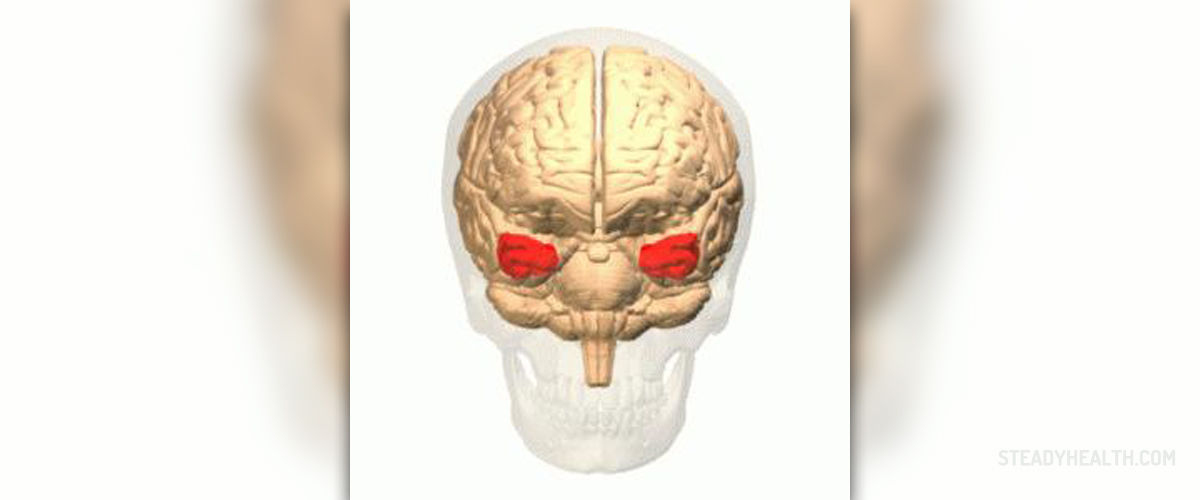
Temporal Lobe Epilepsy
The most widespread kind of epilepsy is symptomatic partial epilepsy, which can be further subdivided into frontal and temporal lobe epilepsy. Out of the two subcategories, the temporal lobe seizures are more common. Temporal lobe seizures can be simple partial or complex partial. Simple partial are characterized by the person remaining conscious while the fits affect only a few parts of the brain. During the complex partial seizures the individual loses awareness as the fit occurs in larger portions of the brain, i.e. affect both temporal lobes. Many persons suffering from epilepsy experience warning signs before the seizure comes. The warning signs are called the aura, and they usually do not last more than a couple of minutes. The aura produces psychological, autonomic, and sensory stimulation. Some of the changes will affect the perception of sound and smell. Other individuals will report delusions and hallucinations occurring before a seizure. The size, shape, and distance of objects is distorted and many feel dizzy as the objects around them keep on spinning while they themselves remain motionless. Déjà vu experiences are often reported by individuals suffering from temporal lobe epilepsy. Some patients complain of feeling detached from oneself while others undergo the feelings of anxiety and fear. As far as the physical symptoms occur, repeated swallowing, and chewing are observed, and so are the increases in heart rate and perspiration. The affected individual stares into space with dilated pupils and is usually completely still. Patients suffering from temporal lobe epilepsy report feeling nauseous prior to their seizures. States of confusion and in some cases amnesia often occur, depending on the severity of the fits.Possible Causes of Temporal Lobe Epilepsy
Types of Epilepsy and Diagnoses
There are numerous kinds of epileptic seizures that are present in different individuals. In some cases various types of fits occur within the same patient. For instance, absence seizures are characterized by a sudden onset and an absence of any warning signs. Absence seizures last less than a minute and do not lead to unconsciousness. Very few of the epileptic symptoms are present. On the other hand, complex partial seizures do have an aura, last more than 60 seconds, and are followed by some of the symptoms, depending on the individual and different occurrences. Another kind of epilepsy includes the frontal lobe complex partial seizures that occur in groups of minor fits with a sudden beginning and end. The individual experiencing frontal lobe complex partial seizures usually exhibits changes in the motor and sensory behavior and perception. Many people who suffer from epilepsy are often drowsy due to sleep problems induced by the disorder, and many report frequent panic attacks. When it comes to diagnosing temporal lobe and most other kinds of epilepsy, different image scanning techniques are utilized. For instance, the diagnostic process usually begins with an MRI or an EEG. Other methods include single-photon emission computed tomography as well as video EEG telemetry.Treatment
Different types of medication are used to manage epilepsy and in majority of first time cases only one drug is necessary to control the seizures. Most clinicians will initially prescribe lamotrigine or carbamzepine. If one of the first line drugs does not produce the desired effects pregabali, clobazam, zonisamide, or topiramate will be prescribed. In some instances medical care professional will advice the patient to undergo surgery. Surgical treatment for epilepsy reduces the recurrence of seizure by approximately 30 percent. Another type of therapy includes the hormone replacement therapy which is a fairly new kind of treatment that requires more research. Hormone replacement therapy involves taking different kinds of hormones in combination with anti-consultants to reduce the frequency and severity of epileptic seizures. For women whose seizures are linked to their menstrual periods this type of treatment may be ineffective as it can put the woman at an increased risk of more seizures than usual.
















Your thoughts on this
Loading...